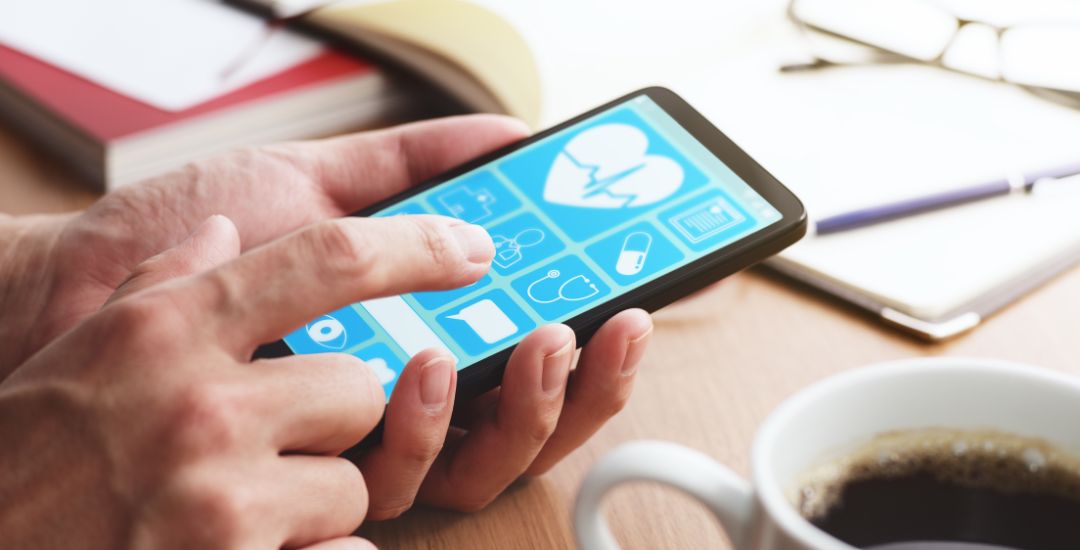As they age, most of your clients are looking for ways to stay comfortably and independently in their own homes. Home care is becoming a crucial aspect of senior living, and new technology is playing a transformative role in making this possible. Whether it’s improving safety, enhancing health management, or reducing caregiver strain, cutting-edge innovations are shaping a future where aging in place is more accessible and efficient than ever. Let’s delve into the exciting advancements that are making this possible.
1. Telehealth and Remote Monitoring: Healthcare at Your Fingertips
One of the biggest advancements in home care is the rise of telehealth and remote monitoring systems. These technologies allow your clients to consult with healthcare providers from the comfort of their homes. Virtual appointments are especially beneficial for those with mobility issues or chronic conditions that require regular check-ins.
Additionally, remote monitoring devices—which track vital signs like heart rate, blood pressure, and glucose levels—are becoming common. These devices send real-time data to healthcare professionals, enabling early detection of potential health issues before they escalate. For your clients managing conditions like diabetes or hypertension, this technology can be lifesaving.
2. Wearable Health Devices: Safety and Health on the Go
Smart wearables, such as smartwatches and fitness trackers, have evolved to meet the needs of home care recipients. These devices can monitor heart rate, detect falls, and track physical activity, sending alerts if something goes wrong. For example, smartwatches equipped with fall detection technology can automatically notify caregivers or emergency services in the event of a fall—a crucial feature for your clients living alone.
For individuals with diabetes, continuous glucose monitors (CGMs) offer a seamless way to track blood sugar levels throughout the day without the need for constant finger pricking. This kind of wearable technology empowers your clients to take control of their health while reducing the risks associated with medical emergencies.
3. Smart Home Technology: A More Connected and Safer Environment
Smart home technology is another game-changer for home care. Voice-activated assistants like Amazon Echo or Google Home make it easier for your clients to control lights, appliances, and even locks without physical effort. With simple voice commands, they can adjust their home environment, enhancing both convenience and independence.
Another innovation is automated medication dispensers, which release the correct dose of medication at scheduled times. This reduces the risk of missed or incorrect doses, especially for those managing multiple prescriptions. Caregivers can also receive notifications if medication is not taken, ensuring adherence to treatment plans.
Read More: Are You Discussing Retirement Planning Needs with Clients?
4. AI-Powered Care: Smarter, Predictive Health Management
Artificial Intelligence (AI) is becoming an integral part of home care, making it smarter and more personalized. AI-powered platforms can analyze health data collected from wearables, sensors, and patient records to predict health issues and notify caregivers about potential concerns. For instance, AI can alert caregivers if your client’s activity level suddenly drops, which could indicate a health issue. It can also analyze sleep patterns and mobility to predict fall risks, enabling preventative measures to be taken before an accident occurs.
5. Robotics: Assistance and Companionship at Home
While still emerging, robotics are starting to play a role in home care. Robotic assistants are being designed to help with daily tasks such as carrying objects, fetching items, or assisting with mobility. These robots can reduce physical strain on both the patient and the caregiver, making daily life easier and safer.
Another exciting development is the rise of robotic pets. These lifelike companions are designed to reduce loneliness and anxiety, especially in individuals with dementia. While they don’t require feeding or cleaning, they offer comfort and interaction that can positively affect emotional well-being.
6. Smart Sensors and Fall Detection: Enhanced Safety at Home
Falls are one of the most significant risks for your clients living alone. To address this, smart homes can now be equipped with fall detection systems that use sensors or cameras to monitor a person’s movement. These systems can detect a fall and automatically contact emergency services or family members.
Similarly, motion sensors can track a person’s movements throughout the day, alerting caregivers to unusual patterns. For example, if your client hasn’t moved from bed for an extended period, caregivers can be notified to check in, preventing potential health emergencies.
7. Virtual Reality for Rehabilitation: Engaging Therapy at Home
Virtual reality (VR) is making its way into home care as a tool for both physical and cognitive rehabilitation. VR-based physical therapy can help your clients improve their balance, mobility, and strength through immersive exercises that they can perform at home. By gamifying the process, VR makes therapy more engaging, which can lead to better outcomes.
For cognitive health, VR experiences are being used to stimulate memory and cognitive function, particularly in patients with Alzheimer’s or other forms of dementia. These programs can help slow cognitive decline while in an enjoyable setting.
8. Smart Hygiene Solutions: Promoting Independence in Daily Routines
Maintaining personal hygiene can become increasingly difficult as we age. New technologies like smart toilets and self-cleaning bathroom systems are helping individuals maintain their dignity and independence. Smart toilets can even monitor hydration levels or detect potential infections, providing valuable health insights in real time.
Additionally, automated shower systems are being developed to aid with bathing, ensuring cleanliness and safety without requiring a caregiver’s presence, which can be particularly beneficial for your clients who value privacy.
Read More: Long-Term Care Insurance Offers Independence
9. Care Coordination Apps: Connecting Caregivers and Families
Digital platforms are revolutionizing how care is coordinated among caregivers, families, and healthcare providers. Care coordination apps enable real-time sharing of health updates, appointment schedules, and medication reminders. This not only reduces the burden on family caregivers but also ensures that care is consistent and properly managed. These apps also allow for secure communication between healthcare providers and family members, making it easier to track a patient’s progress and adjust care plans as needed.
Embracing the Future of Home Care
The future of home care is bright, thanks to rapid advancements in technology. From AI-driven health management to wearable safety devices and smart homes, these innovations are making it easier for individuals to remain in their homes while receiving the care they need.
As more of your clients express a desire to age in place, technology will continue to play a pivotal role in enhancing their independence, safety, and overall quality of life. It’s important to stay informed about these new technologies so that your client can make educated decisions and embrace the benefits of aging in the comfort of their own home.
With these advances, your client will need to determine how they will pay for home care or long-term care. By planning for these costs, your client will ensure that they can live comfortably, safely, and independently for years to come.




